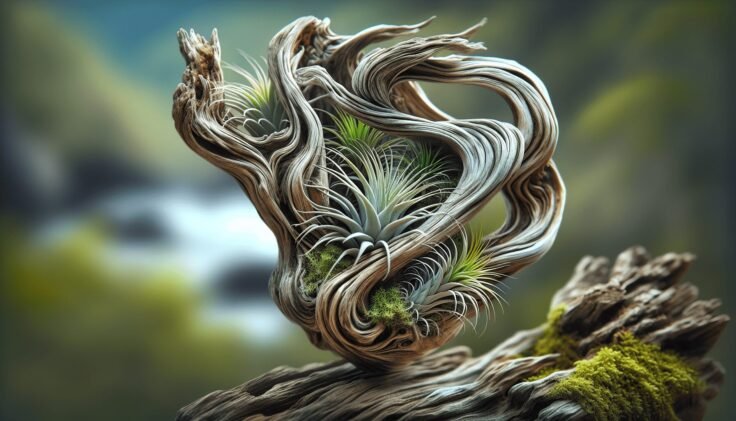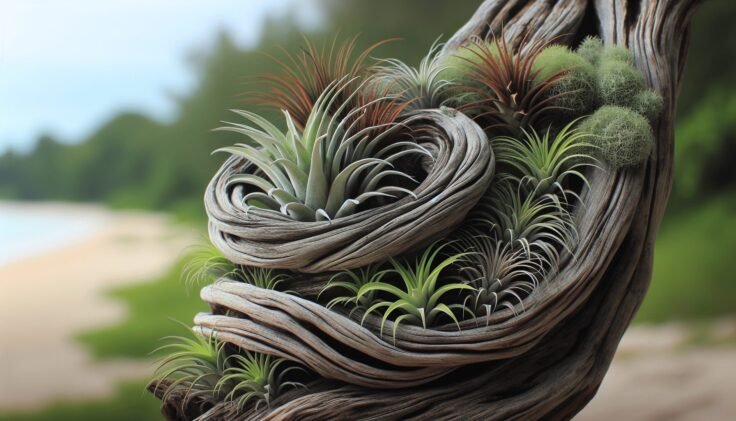Have you ever been intrigued by the unique beauty and rustic charm of driftwood? These naturally weathered pieces of wood, shaped and textured by the forces of nature, bring a slice of the beach into your home. Driftwood branches aren’t just random pieces of wood; they’re art created by the sea, the sun, and time. Whether you’re a DIY enthusiast, an interior designer, or someone who simply loves incorporating natural elements into your living space, driftwood branches offer endless possibilities. Let’s embark on a journey to discover more about these fascinating natural artifacts and explore why you might be interested in finding the perfect driftwood branches for sale.

What is Driftwood?
Driftwood is wood that has been washed onto shore by the forces of winds, tides, or waves. As trees and branches fall into rivers or oceans, they embark on a journey through water before finding their way to the shore. This journey smooths their edges and gives them a unique shape and texture. Driftwood can be found along coastlines, riverbanks, and lake shores. It’s prized for its rustic appeal and the myriad stories it seems to carry from its time spent in water.
Types of Driftwood
Driftwood isn’t just a singular category; it comes in various shapes and sizes, each with its unique characteristics.
Root Driftwood: These are pieces with intricate and complex formations, often looking like abstract sculptures. Ideal for aquascaping or as statement pieces in a room.
Branch Driftwood: Slim, elongated, and versatile, ideal for crafts, decorations, or creating minimalist installations.
Heart Driftwood: More compact and often used for smaller art pieces or as a part of mixed media works.
Weathered Driftwood: Pieces that have had more exposure to the elements, resulting in a very smooth texture and bleached color.
Understanding these types can help you choose the right piece for your purpose.
Uses of Driftwood Branches
Driftwood branches are incredibly versatile and can be used in various projects. They capture the essence of nature and allow for creativity in home décor.
Home Decor
Incorporating driftwood into home décor can add an earthy and rustic touch to any space.
- Wall Art: Use driftwood branches as a base for wall installations. They can serve as a foundation for hanging photos, small plants, or even lights.
- Centerpieces: Create stunning table centerpieces by combining driftwood with other natural elements such as moss, stones, or shells.
- Furniture Designs: Transform larger driftwood branches into bases for coffee tables, benches, or even bed frames.
- Shelving Units: Whittle driftwood branches into unique shelving supports.
Garden and Outdoor Projects
Driftwood doesn’t have to be confined to indoor use. It can be a welcome addition to your outdoor spaces as well.
- Garden Sculptures: Create outdoor sculptures or features that blend beautifully with nature.
- Pathway Edging: Use driftwood branches to line garden paths for a natural look.
- Fencing or Trellises: Construct decorative garden fences or trellises.
Craft Projects
For those who love to craft, driftwood is an excellent material to work with.
- Candle Holders: Carve small sockets in driftwood branches for candle placement.
- Driftwood Wind Chimes: String together small pieces to hang.
- Christmas Trees: Assemble pieces vertically to create a driftwood tree.
The Environmental Impact of Collecting Driftwood
When sourcing driftwood, it is vital to consider its environmental impact. Driftwood plays a role in natural ecosystems by providing habitats for many species and stabilizing coastal landforms. Therefore, responsible sourcing is key.
Responsible Collection
- Permits and Regulations: Always check local guidelines regarding driftwood collection from natural reserves or protected areas.
- Sustainable Practices: Gather driftwood in moderation, leaving some for wildlife that might depend on it for shelter.
- Private Sources: Prefer sourcing driftwood from commercial vendors who legally harvest and replenish.
By being mindful, you can enjoy driftwood’s beauty while preserving its ecological benefits.
Where to Buy Driftwood Branches
If collecting driftwood is not feasible for you, purchasing it from reputable sellers is a great option. Many retailers offer a range of driftwood branches suitable for all kinds of projects.
Online Retailers
The convenience of online shopping makes it easy to find driftwood, and many online stores cater specifically to driftwood enthusiasts.
| Retailer | Offerings | Shipping |
|---|---|---|
| Driftwood Art Supplies | Variety of shapes and sizes | Worldwide |
| Natural Elements Store | Bulk purchase options | Free shipping on orders over $50 |
| EcoCraft Driftwoods | Sustainable sourcing certification | National shipping |
Online retailers often provide diverse options, allowing you to choose the perfect piece without leaving home.
Local Craft Stores
Many local craft stores carry driftwood, especially if they are near coastal areas or lakes.
Artisan Markets
Check out artisan markets for unique, handcrafted driftwood pieces. These often come with the charm of being locally sourced and artistically treated.

Pricing of Driftwood Branches
When buying driftwood branches, prices can vary based on size, type, and uniqueness.
Factors Influencing Price
Size and Weight: Heavier and larger pieces obviously cost more due to higher shipping fees and their increased potential for use in various applications.
Rarity and Uniqueness: Particularly unique or rare pieces might command a higher price.
Finishing and Preparation: Driftwood that has been prepared (cleaned, bleached, or treated for insects) is usually more expensive than raw pieces.
Typical Price Range
For a basic idea, a simple branch driftwood might start at around $5 for a small piece, ranging up to $200 or more for larger or unique shapes suitable for big installations.
Care and Maintenance
To preserve the beauty and longevity of your driftwood, some care and maintenance are needed.
Cleaning and Preparing Driftwood
Proper cleaning is essential before incorporating driftwood into your home or garden.
Rinsing: Thoroughly rinse your driftwood with fresh water to remove any salt, sand, or debris.
Soaking: Soak in freshwater for a few days, changing the water daily to help remove any tannins that can stain.
Drying: Allow the driftwood to dry completely in the sun to prevent mold and ensure it is pest-free.
Sealing: Depending on its intended use, sealing with a clear wood finish can help preserve its integrity.
Long-term Maintenance
Regular dusting and occasional re-sealing or oiling can keep your driftwood looking vibrant. Avoid exposing your driftwood to excessive moisture to prevent warping or mold growth.
The Aesthetic Appeal of Driftwood
Driftwood’s aesthetic appeal lies in its natural, minimalist beauty. The tactile quality of driftwood, its sandy hues, and organic forms provide a sense of calm and connection to nature, bringing serene energy to any interior or exterior.
Design Styles that Incorporate Driftwood
Driftwood pairs beautifully with various design styles, such as:
- Coastal: Perfect for beach-inspired homes and nautical themes.
- Rustic: Complements wood, stone, and rustic elements.
- Minimalist: Provides a focal point with its stark simplicity.
- Bohemian: Blends well with an eclectic mix of textures and patterns.
Whatever your style, driftwood can adapt, enhance, and transform spaces effectively.
Incorporating driftwood into your life isn’t just about a design choice; it’s embracing the natural beauty that our environment offers. Whether you’re enjoying the satisfaction of crafting your own piece or the gratitude of supporting sustainable sources, driftwood branches present a multitude of options to express your creativity. As you consider purchasing driftwood branches for sale, reflect on how each piece can uniquely contribute to your artistic vision or living environment.

















